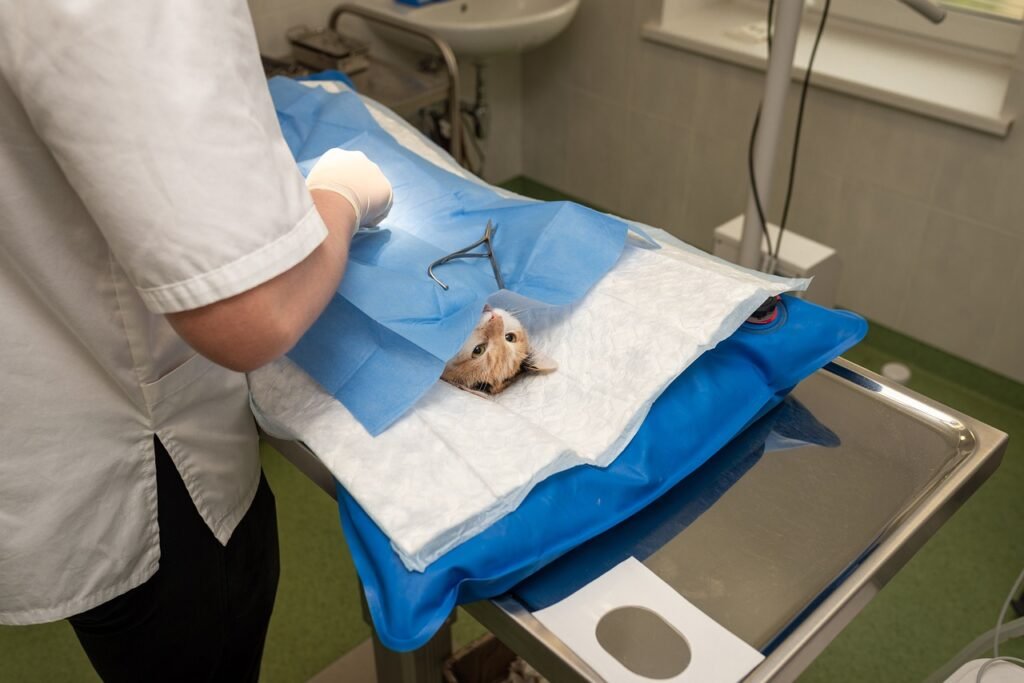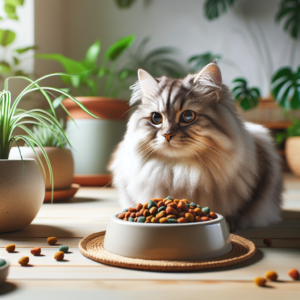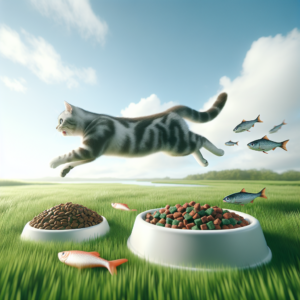
Food allergies in cats can be a challenging issue for pet owners to navigate. These allergies can lead to a range of symptoms that affect a cat’s overall well-being. Understanding the nature of food allergies, their causes, symptoms, diagnosis, and management is crucial for ensuring the health and happiness of your feline friend. This article aims to provide a comprehensive guide to understanding food allergies in cats, helping you to better care for your pet.
What Are Food Allergies?
Food allergies in cats occur when the immune system mistakenly identifies a particular food ingredient as harmful and mounts an immune response against it. This response can lead to various symptoms, some of which can significantly affect a cat’s quality of life. Food allergies are different from food intolerances; while allergies involve the immune system, intolerances are typically related to digestive issues without an immune response.
Common Causes of Food Allergies
The most common culprits of food allergies in cats are proteins. Cats are obligate carnivores, meaning their diet consists primarily of proteins. However, some cat foods contain ingredients that can trigger allergic reactions. Common proteins that may cause allergies include:
– Beef
– Chicken
– Fish
– Dairy products
– Lamb
It’s important to note that grains can also cause allergies, although they are less common than protein allergies. The exact cause of why some cats develop food allergies while others do not is not fully understood, but it is believed to be a combination of genetic and environmental factors.
Symptoms of Food Allergies in Cats
Food allergies in cats can present a wide range of symptoms, many of which overlap with other health conditions. The most common symptoms include:
– **Skin issues**: Itchy skin, redness, and rashes, particularly around the head, neck, and ears.
– **Gastrointestinal problems**: Vomiting, diarrhea, and gas.
– **Respiratory symptoms**: Sneezing, coughing, and wheezing, although less common.
It is important to observe these symptoms closely, as they can be indicative of other health issues as well. If your cat is displaying any of these symptoms, it is essential to consult with a veterinarian for a proper diagnosis.
Diagnosing Food Allergies
Diagnosing food allergies in cats can be a complex process. Veterinarians typically use a combination of methods to determine if a food allergy is present.
– **Elimination diet trial**: This is the most effective method for diagnosing food allergies. It involves feeding your cat a diet that contains novel proteins and carbohydrates that they have never been exposed to before. This diet is maintained for a period of 8-12 weeks, during which any previous foods are completely eliminated. If the symptoms improve, it suggests a food allergy.
– **Reintroduction**: Once symptoms have subsided, individual ingredients are gradually reintroduced to the diet to identify the specific allergen.
– **Blood tests and skin tests**: These are less commonly used and less reliable for diagnosing food allergies in cats.
Managing Food Allergies
Once a food allergy is diagnosed, managing it involves avoiding the allergenic ingredient. Here are some steps you can take to manage your cat’s food allergies:
– **Avoidance of allergens**: Once the offending food ingredient is identified, it should be completely eliminated from your cat’s diet.
– **Specialized diets**: Feeding your cat a hypoallergenic diet or a diet based on novel proteins can help manage food allergies. These diets are formulated to minimize the risk of allergic reactions.
– **Regular vet check-ups**: Regular visits to the veterinarian are crucial to monitor your cat’s health and ensure that the management plan is effective.
– **Read labels carefully**: Always read pet food labels carefully to ensure they do not contain the allergens that affect your cat.
Preventive Measures
While it is not always possible to prevent food allergies, some measures can reduce the risk of developing them:
– **Introduce variety early**: Introducing a variety of proteins early in a cat’s life may help reduce the risk of developing allergies.
– **Monitor health**: Regular health check-ups can help detect any early signs of allergies, allowing for timely intervention.
– **Quality diet**: Feeding a high-quality, balanced diet can support overall health and potentially reduce the risk of allergies.
The Role of Nutrition in Managing Allergies
Nutrition plays a critical role in managing food allergies in cats. A well-balanced diet that avoids triggering ingredients is essential. Here’s how nutrition can help:
– **Supports immune function**: A diet rich in essential nutrients supports the immune system, potentially reducing the severity of allergic reactions.
– **Promotes skin health**: Omega-3 and omega-6 fatty acids can help maintain healthy skin and reduce inflammation.
– **Digestive health**: High-quality proteins and easily digestible ingredients can support digestive health and reduce gastrointestinal symptoms.
Understanding the Impact on Quality of Life
Food allergies, if left unmanaged, can significantly impact a cat’s quality of life. Chronic itching, digestive discomfort, and other symptoms can cause stress and discomfort for your pet. By understanding and managing food allergies, you can help your cat lead a healthier, happier life.
Conclusion
Understanding food allergies in cats is essential for any pet owner who wants to ensure the health and well-being of their feline companions. Recognizing the symptoms and seeking a proper diagnosis are the first steps in managing food allergies effectively. By working closely with a veterinarian and making informed dietary choices, you can successfully manage your cat’s food allergies, improving their quality of life and ensuring they remain healthy and content.
In conclusion, food allergies in cats, while challenging, can be managed with the right knowledge and approach. Early detection, careful management of diet, and regular veterinary care are crucial components of managing food allergies. By understanding the nature of these allergies, you can provide your cat with the care and nutrition they need to thrive.
#ChatGPT assisted in the creation of this article.







